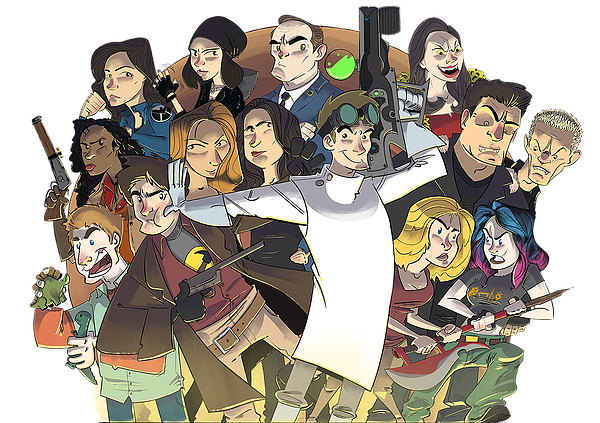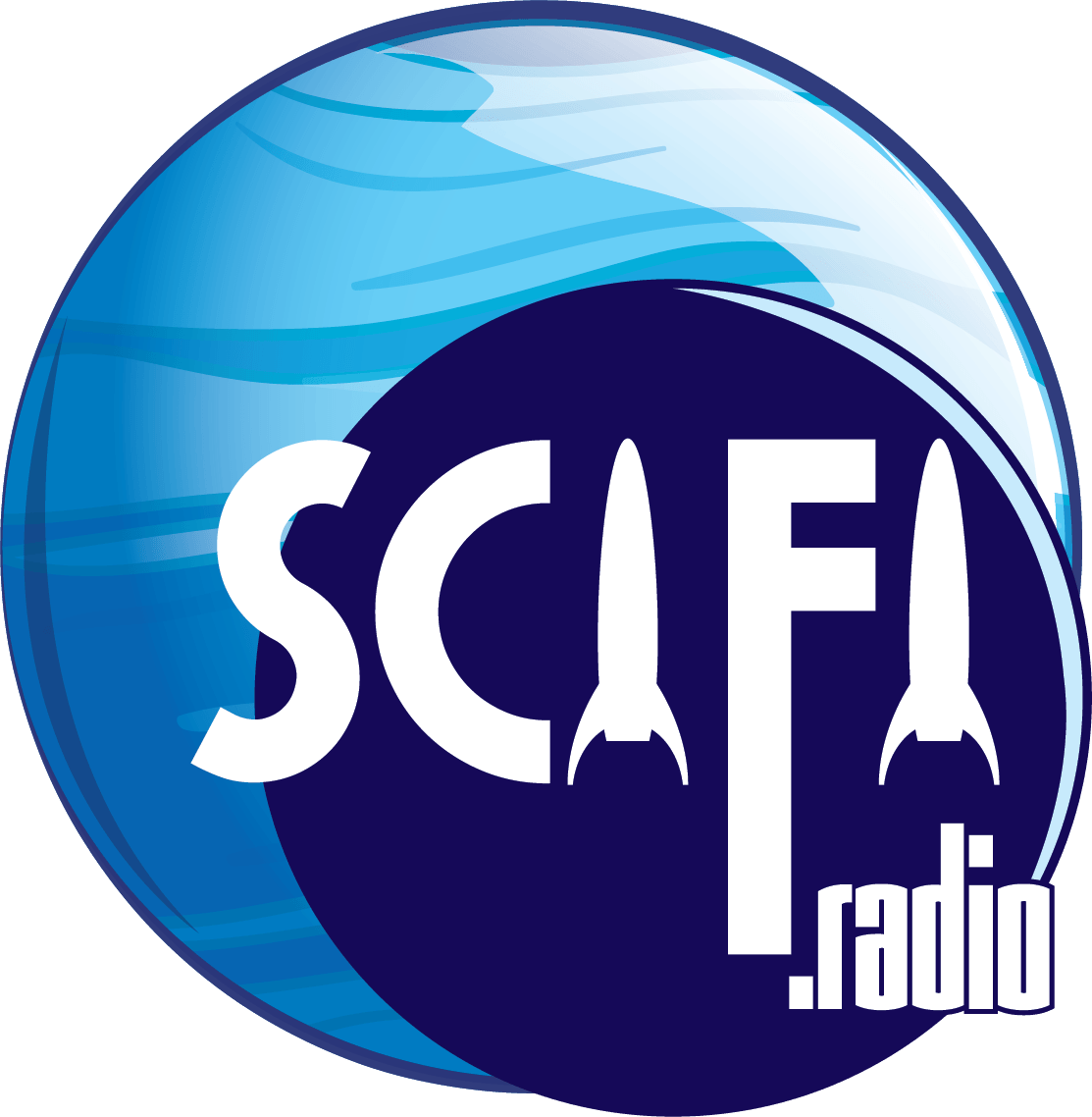His novel, American Gods: Winner of the Nebula, Hugo, Locus and SFX awards. His novella, Coraline: Winner of the Nebula, Hugo, Locus, Bram Stoker and British Science Fiction awards. His young-adult novel The Graveyard Book: Winner of the Newberry Medal and Hugo awards. His Preeminent comic-book saga Sandman: Winner of the Hugo, Locus, Bram Stoker and British Fantasy awards. These are but a small representation of his prodigious output.
Neil Gaiman has plied his career with singular style. Among his true fans, he plays not so much the role of a mere writer of speculative yarns but, rather, casts a grander shadow – that of the mythic storyteller. His fictional excursions, even his personal anecdotes, conjure a tone of magic realism that other masters of the macabre, such as Clive Barker or Stephen King, would be hard-pressed to match. It appears to be an almost natural state in which Mr. Gaiman resides each and every day.
Royce Hall is a subtle study in collegiate elegance. From its decorative ceiling to the graceful sweep of its balcony tier, it is easy to imagine many a learned guest pontificating from its stage, shaping young minds with sage wisdom and technical
acuity. Unsurprisingly, it was also easy to sense an acute contrast between the instrinsic dignity of the venue and the questionable status of a man who’d launched the trajectory of his career through his work in the medium of comic-books.
That is, until one takes a closer look at his curriculum vitae. With the subtle intensity and persistence of the true didactic, Mr. Gaiman has, time and again, thrown aside the obscuring cloak of the anachronistic and arcane to reacquaint us with the shapes of our most primal questions, fears and dream-states. Though the greatest spark of his popularity was ignited by his tenure on the multi-award-winning DC comic book series Sandman, he has shown equal facility in the venue of mainstream and young-adult rose. Because of his deep connection to the secret worlds that lie both above and beneath the secular lives we know, he does not so much simply entertain his readers via his fanciful prose as act as their spiritual travel guide through the esoteric and unseen.
The presentation was scheduled to begin at 8:00 p.m. The social atmosphere within
the crowd of attendees was that of well-mannered enthusiasm and expectation. Master of Ceremonies David Sefton took the stage at 8:10. His impassioned plea against the use of all cell phones and flash photography was met with good humor. A nice if brief attempt at audience warm-up.
The man of the hour (or, in this case, hour and a half), took the stage at 8:13 p.m. to a strong wave of applause. We were off to a good start.
What ensued next was, in certain ways, in keeping with the dignified ambiance of the gathering while, at the same time, a curious exercise in homogeneity.
Mr. Gaiman launched into a well-measured monologue of his humble beginnings as a writer and his initial trials and troubles on the road to publication. While the subject matter was interesting, it began to take a back seat to the mechanics of the presentation. Upon the realization that Mr. Gaiman was not spontaneously speaking from the heart but was, rather, reading from a scripted speech, a fundamental layer of intimacy was ripped away. While Mr. Gaiman’s delivery and vocal tone were certainly a match for the material, the presence of a full-blown, prepared statement almost instantly gave the proceedings an antiseptic air. Adding to that was the moment in which Mr. Gaiman discovered that the pages of his dissertation were out of order. Unable to continue while he sorted things out, he predictably, if a bit nervously, entreated the audience to “talk amongst yourselves”.
There was also a feeling of deliberate pace and rhythm throughout his presentation that did not so much play to a sense of professionalism as it did to a sense of comfort zone by way of rote – a kind of nuts-and-bolts pattern that did not lend itself to improvisation. While it’s understood that public speaking always has been and probably always will be one of the great primal fears of Man, a lack of the ability to think on one’s feet when one makes his trade in the art of communication is ironically telling.
That aside, Mr. Gaiman’s engaging recitation of his short story “My Last Landlady” was received with well-deserved applause and, no doubt, gave notice to newcomers in the audience that, in addition to his notoriety as a widely-celebrated author, within his unassuming frame beat the heart of an ineluctably charming conversationalist.
Likewise, his readings from his novels The Graveyard Book and Odd and the Frost Giants were met with heartfelt appreciation.
The closer to the show was to be a Q & A but the implementation again took an impersonal road. A greater sense of distance between audience and celebrity was felt when it was stated that all questions to Mr. Gaiman had been written down on index cards beforehand. Nonexistent was the possibility of a live interchange between the people and the man they’d gathered to see. Instead, upon conclusion of his written capsule, Mr. Gaiman proceeded to read off the questions posed on said cards. To this reviewer, it had the effect of telling the punchline to a joke long after the conversation has moved on to other topics. Again, however, his quietly affable nature went a long way toward assuring warmth in what might otherwise be considered a cold and antiseptic endeavor.
One more stumbling block was observed at show’s end. An announcement was made that Mr. Gaiman’s books would be available in the common area outside the assembly room. However, Mr. Gaiman himself would not be on hand for personal autographs. Instead, the books had been pre-signed. In and of itself, this might not have seemed so stand-offish. However, when combined with the previous curiosities of the evening, this unwittingly came across as the icing on a very aloof cake.
No denigration against Mr. Gaiman exists or is intended. It was brought to this reviewer’s attention that the machinations of his visit were captained by the hall/event organizers. One could not help but feel that more’s the pity. This event enjoyed a turnout of approximately fifteen hundred attendees. What could have been a thoroughly illuminating evening of spontaneous give-and-take instead featured an undercurrent of frustrating sterility, saved primarily by the grace with which Mr. Gaiman rose to the occasion.
There is an inscription above the presentation stage in UCLA’s Royce Hall that reads:
“Education is learning to use the tools which the race has found indispensable”.
On this night, Mr. Gaiman admirably underlined that maxim by demonstrating one of the most important tools instrumental in sustaining our very hopes and triumphs as a species – that of pure imagination.
Royce Hall’s next genre event will be on April 23rd: “Titans of the Graphic Novel: Harvey Pekar and Alison Bechdel” All information on the event can be found here: http://www.uclalive.org/event.asp?Event_ID=678










